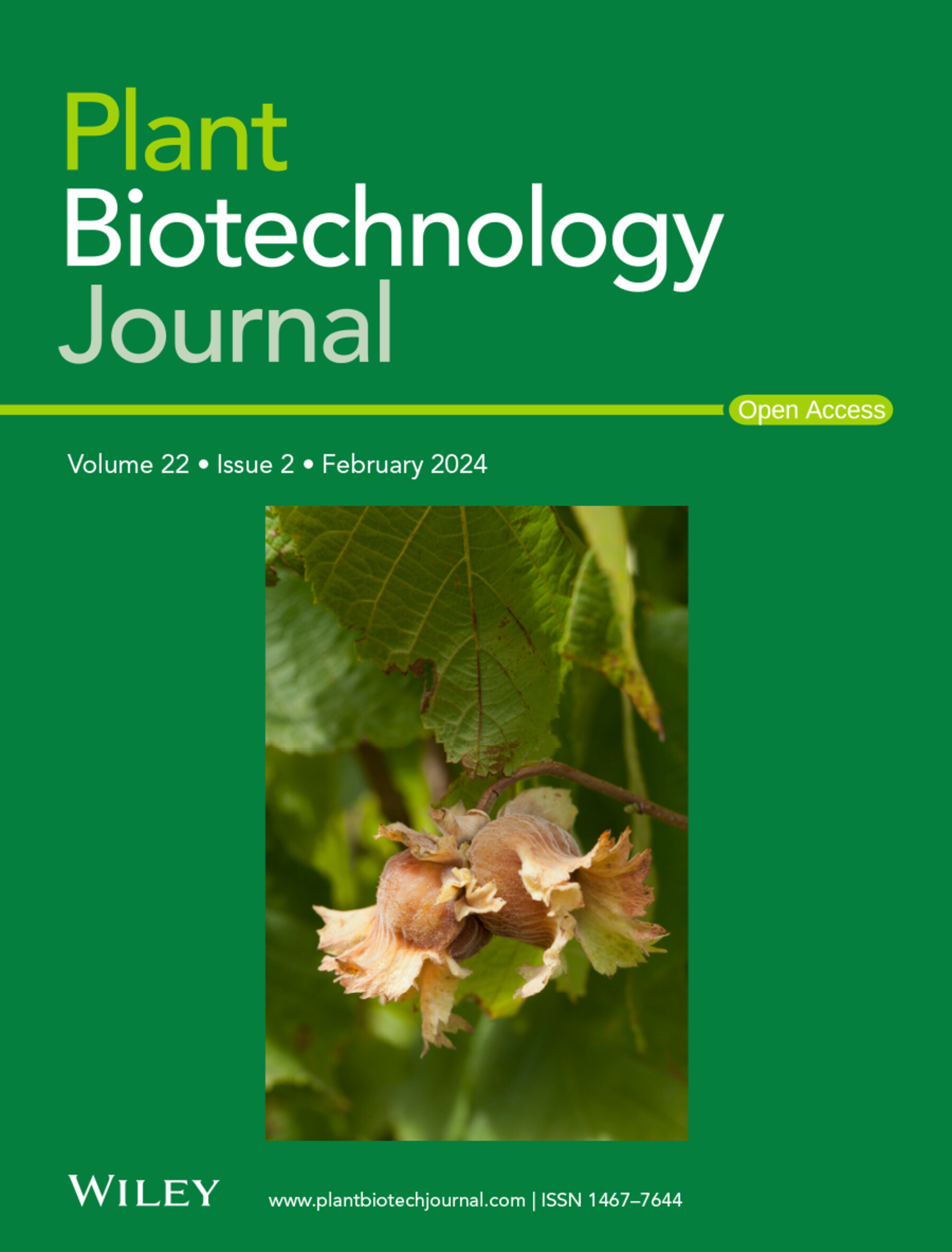Uncovering Convergent Pattern Recognition Receptors Recognising Phytophthora Across Plant Lineages.
IF 10.5
1区 生物学
Q1 BIOTECHNOLOGY & APPLIED MICROBIOLOGY
引用次数: 0
Abstract
Pattern recognition receptors (PRRs) are pivotal for plant immunity, yet their discovery in crops is hindered by lineage-specific divergence. We demonstrate that microbe-associated molecular patterns (MAMPs) often activate immunity through phylogenetically unrelated, convergently evolved PRRs across plant lineages. Using the Phytophthora-derived MAMP RLK6 as a prototype, we identified two leucine-rich repeat receptor-like proteins (LRR-RLPs), NbRKR1 and NbRKR2, that redundantly perceive RLK6 in the model plant Nicotiana benthamiana. Strikingly, soybean retained RLK6 responsiveness despite lacking NbRKR1/2 orthologs. By integrating AlphaFold3 structural prediction with functional screening in N. benthamiana receptor mutants, we uncovered GmRLP30 as the convergent RLK6 receptor in soybean. Phylogenetic analysis revealed RKR1/2 conservation in Solanaceae but their absence in Capsicum annuum, which encodes a truncated RKR1 variant incapable of activating RLK6 immunity. Critically, heterologous expression of NbRKR1 or GmRLP30 in pepper restored RLK6 perception, confirming functional equivalence. These results establish a direct receptor-mediated communication between pathogen and host surfaces, an ortholog-independent pipeline for rapid PRR mining across crops, and a foundation for engineering synthetic immune interfaces with durable disease resistance.揭示跨植物谱系识别疫霉的收敛模式识别受体。
模式识别受体(PRRs)是植物免疫的关键,但它们在作物中的发现受到谱系特异性分化的阻碍。我们证明了微生物相关的分子模式(MAMPs)通常通过系统发育无关的、在植物谱系中趋同进化的PRRs激活免疫。以植物源的MAMP RLK6为原型,研究人员发现了两种富含亮氨酸的重复受体样蛋白(lrr - rlp),即NbRKR1和NbRKR2,它们在模式植物benthamiana中冗余感知RLK6。引人注目的是,尽管缺乏NbRKR1/2同源物,大豆仍保留了RLK6的响应性。将AlphaFold3结构预测与benthamiana受体突变体的功能筛选结合起来,我们发现GmRLP30是大豆中趋同的RLK6受体。系统发育分析显示,RKR1/2在茄科植物中存在,但在辣椒中不存在,其编码的RKR1截断变体不能激活RLK6免疫。重要的是,NbRKR1或GmRLP30在辣椒中的异源表达恢复了RLK6的感知,证实了功能等效。这些结果建立了病原体和宿主表面之间的直接受体介导的交流,建立了一个不依赖于同源的作物快速挖掘PRR的管道,并为工程合成具有持久抗病能力的免疫界面奠定了基础。
本文章由计算机程序翻译,如有差异,请以英文原文为准。
求助全文
约1分钟内获得全文
求助全文
来源期刊

Plant Biotechnology Journal
生物-生物工程与应用微生物
CiteScore
20.50
自引率
2.90%
发文量
201
审稿时长
1 months
期刊介绍:
Plant Biotechnology Journal aspires to publish original research and insightful reviews of high impact, authored by prominent researchers in applied plant science. The journal places a special emphasis on molecular plant sciences and their practical applications through plant biotechnology. Our goal is to establish a platform for showcasing significant advances in the field, encompassing curiosity-driven studies with potential applications, strategic research in plant biotechnology, scientific analysis of crucial issues for the beneficial utilization of plant sciences, and assessments of the performance of plant biotechnology products in practical applications.
 求助内容:
求助内容: 应助结果提醒方式:
应助结果提醒方式:


